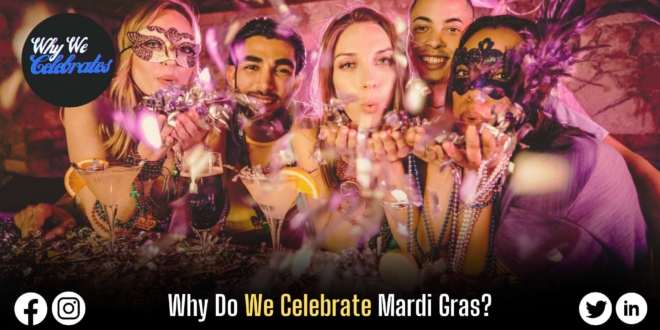Mardi Gras, also called Carnival or Carnaval, is a lively and joyful celebration that has fascinated people around the world for hundreds of years. Whether it’s the vibrant parades in New Orleans or the mysterious masked balls in Venice, Mardi Gras is a time for fun, tradition, and cultural importance. But why do we celebrate Mardi Gras? Let’s take a closer look at its fascinating history, explore where it all began, and discover why this festive event holds such significance.
The Origins of Mardi Gras
Mardi Gras, which has its origins in ancient times, is connected to spring and fertility celebrations. Back in ancient Rome, lively festivals like Saturnalia and Lupercalia involved feasting, dancing, and masquerading. When Christianity spread to Rome, religious leaders decided to blend these popular local customs with the new faith. The wild parties and indulgence of Mardi Gras now serve as a lead-up to Lent—a 40-day period of fasting and reflection before Easter Sunday.
What Does Mardi Gras Mean?
Mardi Gras is a special celebration that happens before Ash Wednesday, which marks the beginning of Lent. Lent is a period of fasting and reflection observed by some Christians. But before this time of self-restraint, people used to have a big party! They would eat lots of rich and fatty foods like meat, eggs, milk, lard, and cheese. This festive time is also called carnival. So, Mardi Gras is all about enjoying delicious food and having fun before the more serious days of Lent.
New Orleans: The Birthplace of American Mardi Gras
In 1699, French explorers arrived near what is now New Orleans, Louisiana. They called their landing spot “Point du Mardi Gras.” Over time, New Orleans and other French settlements embraced Mardi Gras with street parties, masked balls, and fancy dinners. Even when Spanish rulers tried to ban it temporarily, the spirit of Mardi Gras persisted.
How is it Celebrated?
- Parades: Imagine colorful floats moving through the streets, filled with people wearing costumes. These folks throw beads, trinkets, and coins to the excited crowd.
- Costumes: Picture a mix of whimsical and extravagant outfits. Mardi Gras is all about expressing yourself freely and letting go of inhibitions.
- Music: Everywhere you go, lively tunes fill the air. Bands play both traditional and modern songs to keep the party vibe alive.
- Food: Think of rich, indulgent dishes that reflect local flavors. One popular treat is the King Cake, a sweet pastry with a hidden surprise inside.
- Why It Matters: Mardi Gras has several reasons for being important:
- Religious Significance: For Christians, it’s a final celebration before the reflective period of Lent.
- Culture and Art: Communities get to showcase their unique traditions, music, and creativity.
- Economic Boost: Mardi Gras attracts tourists, benefiting local businesses.
- Social Connection: It brings people together for shared joy, laughter, and a sense of community.
- Around the World: While New Orleans is famous for Mardi Gras, similar festivities happen globally:
- Belgium: Binche hosts a UNESCO-recognized carnival with vibrant costumes and stilt walkers.
- Czech Republic: Prague has masked balls and processions during its Carnival.
- Germany: Cologne’s carnival includes elaborate parades and witty songs.
- Italy: Venice’s Carnevale stands out for its intricate masks and elegant attire.
- Sweden: Mardi Gras blends with Viking-inspired celebrations in Gothenburg.
- United States: Cities like Mobile (Alabama) and Galveston (Texas) have their unique Mardi Gras traditions.
Mardi Gras Around the World
Mardi Gras Celebrations Around the World
Mardi Gras isn’t just in New Orleans; it’s celebrated all over the world. Here are some interesting facts:
- European Traditions: Countries like Belgium, the Czech Republic, Germany, Italy, and Sweden have their own unique Mardi Gras customs. They include parades, costumes, and delicious foods.
- Beyond New Orleans: In the United States, cities like Mobile (Alabama) and Galveston (Texas) also throw lively Mardi Gras parties.
- Costumes and Fun: People wear fancy costumes and masks during Mardi Gras. Sometimes, they even show a little more skin than usual!
- When Is It?: Mardi Gras usually happens on “Fat Tuesday,” which is the day before Ash Wednesday. But some places celebrate for a whole week!
- The King Cake: This sweet, round cake has surprises hidden inside. It reminds us of the three wise men’s journey to find baby Jesus.
Conclusion
Mardi Gras isn’t just a party; it’s a blend of history, culture, and happiness. As colorful floats move through the streets and music surrounds you, think about the old traditions and the lively atmosphere that make Mardi Gras an unforgettable event.






